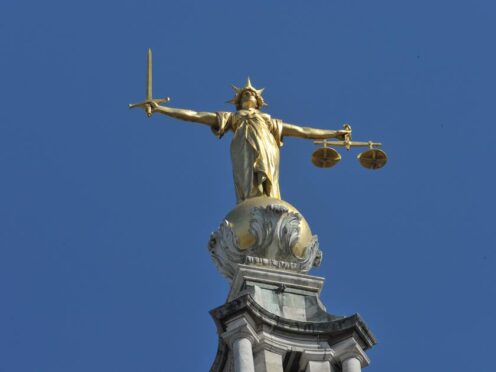
Three men accidentally cleared of killing a man due to a jury forewoman’s “mistake” have lost a High Court bid to challenge their ongoing detention in prison.
In January, brothers Paul and Matthew Yusuff and their friend Moussa Traore were initially unanimously acquitted by jurors of offences relating to the fatal stabbing of 32-year-old Adrian Keise outside Waterloo station in London.
Within minutes of the not guilty verdicts being delivered, the jury at the Old Bailey was reconvened after a judge received a note indicating the jurors had not all agreed on their decisions.
When the jury forewoman was asked by Judge Charles Gratwicke if she had made a mistake when she said the jury’s verdicts were unanimous, she replied: “Yes.”
The jurors were sent out to restart their deliberations, and, while they later found Paul Yusuff not guilty of possessing a blade or point, they were unable to reach verdicts on the other counts and were discharged again.
The three men, who denied all the charges against them, sought to challenge their ongoing detention at HMP Belmarsh pending a planned retrial in December, arguing that the first not guilty verdicts were “valid” and should not have been “reopened”.
In a 20-page written ruling on Wednesday, three judges rejected their case, concluding that the jury forewoman had suffered “a form of stage fright” amid the “stressful environment” of court proceedings.
Dame Victoria Sharp, who heard the challenge alongside Mr Justice Holgate and Mr Justice Hilliard, said the men’s “continuing detention pending their retrial is lawful”.
Paul Yusuff, 21, and Matthew Yusuff, 23, had faced charges of murder and were also charged with an alternative count of manslaughter along with Traore, 24.
Lawyers for the trio previously argued that the ongoing detention of the trio from south London is “illegal” because proceedings became a “nullity” after the jury was discharged following the initial verdicts.
Kerim Faud KC, for Paul Yusuff, said that when the jurors were first let go they were outside the “controlled and transparent environment” of the courtroom, were no longer under oath, and had “ample time” in which they could have discussed the case among themselves or with others outside, including via phone messages.
He said it is “equally likely” there was a “change of mind” within the 17 minutes before the alleged mistake was raised.
The Crown Prosecution Service (CPS) said the error came after a jury “misunderstanding” and was “communicated very quickly” to the judge who “properly exercised his discretion to allow rectification of the jury’s mistake”.
CPS lawyers said it could not be claimed that the jury forewoman saying she made a mistake “was somehow untrue or inaccurate”.
Dame Victoria said that shortly before the verdicts were given the jury had sent a note “indicating that they were not unanimous”.
“In this case, it is plain from what happened that the forewoman had made a mistake in saying that the jury had reached unanimous verdicts,” the judge said.
She added: “Put simply, the jury identified the mistake that had been made by their forewoman promptly; the mistake they identified was consistent with their first note to the judge – that they had not reached unanimous verdicts on any count; and the matter was then sensibly and expeditiously sorted out by the judge.”
“It cannot be said, in those circumstances, either that the judge made any jurisdictional error of such gravity as to deprive him of the jurisdiction to accept the jury’s correction of the verdicts returned, or that he erred in the exercise of his discretion.”

Enjoy the convenience of having The Sunday Post delivered as a digital ePaper straight to your smartphone, tablet or computer.
Subscribe for only £5.49 a month and enjoy all the benefits of the printed paper as a digital replica.
Subscribe